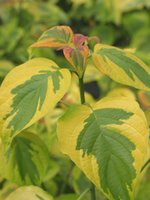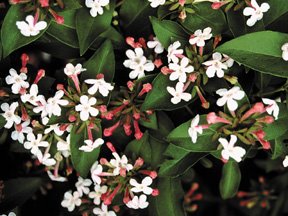
Hydrangea paniculata ‘Limelight’ US plant patent #12,874
Without a doubt the best looking plant in my garden right now is Limelight Hydrangea (Hydrangea paniculata ‘Limelight’). When I first saw this plant in the Netherlands, my initial reaction was “Cool a hydrangea with soft green flowers, ... but wouldn’t pink be ever better. After getting the plant back to the U.S. and watching the plant grow, and watching people’s reaction to the plant (especially the response from women), I began to realize that this was one very special plant. After growing the plant for six years I’ve come to realize that this plant is was one in a million.
Light has it all! Not only is it drop dead gorgeous, it is also a performer. Gardeners from Orlando to Manitoba have sent me emails telling me how well this plant delivers. A landscaper from Chicago told me that he uses the plant in every design he creates. He told me that nearly all of his landscapes are in new neighborhoods with few trees. Bigleaf Hydrangea (Hydrangea macrophylla) reblooming or not, cannot take the heat and sun. They simply collapse under these conditions. Limelight on the other hand thrives. It takes sun or shade, sand or clay soils. In the North or in the South it has proven itself to be a winner.
Besides its unique flowers and its superb adaptability, there are several other things that make this plant a proven winner. It has very strong stems that hold up its massive flowers even after a heavy rain. The old standard variety - Pee Gee Hydrangea (Hydrangea paniculata ‘Grandiflora’) deserves to be thrown on the compost heap because it is notorious for collapsing under its own weight. Also, if you watch Limelight closely you will notice just keeps sending up fresh new flowers. It blooms continuously from mid-summer until frost. This results in a unique autumn floral display - while the older flowers change from green to white to pink to burgundy, new green flowers are added to the color mix. In the autumn this wide range of flower colors is simply breathtaking.
Want to create something really incredible? A friend of mine has a 50 yard long hedge of Limelight running along side his driveway. People wizzing past his house at 55 mph literally slam on their breaks when they see it.
Limelight was developed by world renowned plantsman Pieter Zwijnenburg. Pieter and his wife Anja own a nursery in Boskoop, Netherlands. He grows over 2500 different varieties of trees and shrubs and has introduced over 50 different new plants in his young career. I had the pleasure of seeing Pieter receive the Pennsylvania Horticulture Society’s Gold Medal Award this spring in Chicago. It was a well deserved award because Pieter is a very special person and Limelight is a very special plant.








